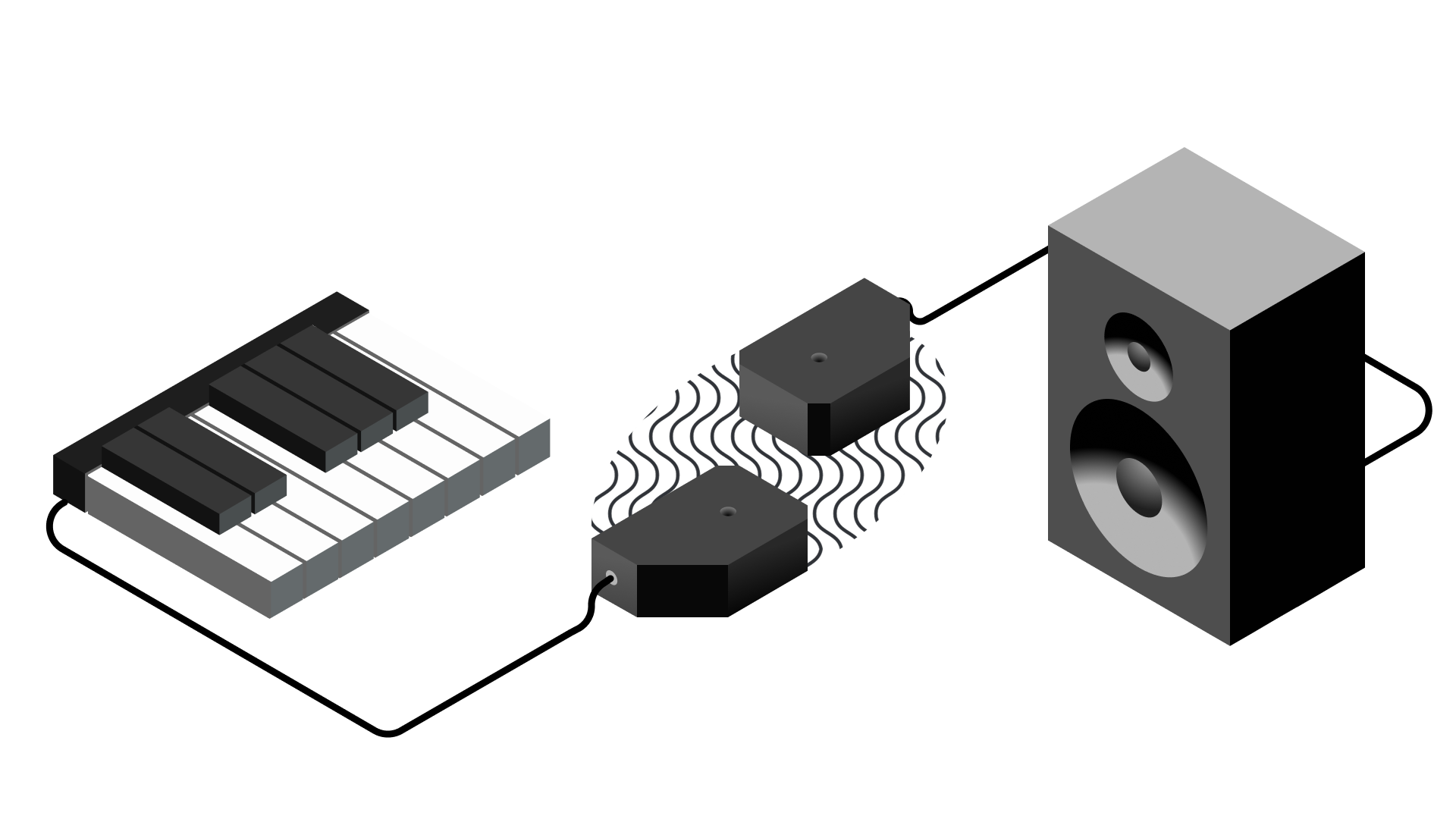Electro-magnetic Coils Throw sound around
Nonexistent Coils send and receive audio signals through space.
The best way to understand how Coils work is to plug a sound source into one, and another out to speakers.
When close together, Coils will pass a signal from the sound source to the speakers. Move them apart and the volume drops until they're out of range.
This simple effect lets you mix, fade, route and manipulate audio any way you like. Get a bunch of Coils together to build more capable systems, and easily reconfigure the system just by moving them around.
Our Coils are designed to be held, stacked, tiled or bolted to things. They can be mounted seamlessly on standard pegboard and will mount to camera tripods that use standard ¼”-20 bolts.

Some systems you can build with Coils:
Mixing/routing Plug any number of sound sources into Coils and pick them up with other Coils. Set up a stereo pair, effects send or multi-channel speaker layout and throw sound around.
Sound design Drive the signal going into a coil to add warm electromagnetic saturation to the sound.Pick up magnetic fields from objects around you, such as motors, permanent magnets, or your phone speaker.
Pingable feedback oscillator Configure two Coils and a preamp into a feedback loop and move them together to generate a stable feedback tone. Move the Coils to change the pitch like a theremin or use multiple pairs for more voices.
Dynamics Coils don't send or receive CV, but they are affected by it. Mixing CV with the audio going into a Coil will dampen the output like a compressor. Or use an envelope follower to generate CV from any input signal.
Available exlusively at Nightlife Electronics
We offer Coils through our partners at Nightlife Electronics. If you're in the Vancouver area, you can come by the shop and give Coils a try anytime.
Buy nowWant updates?
If you'd like to be kept informed of updates about Coils and other Nonexistent news, please subscribe.

